Tracking is one of the most family-friendly wildlife activities; you can enjoy it anywhere there is a patch of open ground. As I’ve written previously, kids love deciphering the mysteries of animal tracks. Even my two-year-old son loves checking out the tracks in our yard.
Following tracks is often the best way to learn habits of undisturbed wildlife. Oftentimes, you never know many elusive animals are roaming your neighborhood – until you see their tracks. It might be difficult to catch a glimpse of a raccoon, but you may be able to follow its nightly routine via tracking.
Tracking is also an easy activity to learn. Yes, there are many nuances and some tracks are difficult to tell apart. I highly recommend Olaus Murie’s classic Peterson’s Field Guide to Animal Tracks. It contains exhaustive information on track size, patterns, scat, dens and other sign left by animals. It’s like a mystery-solving handbook. I wore mine out as a kid and still refer to it frequently.
Snow, of course, makes tracking easy. If you don’t have snow, trying searching near water like ponds, creeks or rivers. Most wild animals visit water, and leave their tracks in the mud.
This guide isn’t meant to take the place of a book or app. I’m featuring some of the interesting tracks you might find on your ramblings. These are also fun to follow. Many of them can be found in urban and suburban habitats.
Please leave your own favorites in the Comments section.
-
Red Fox
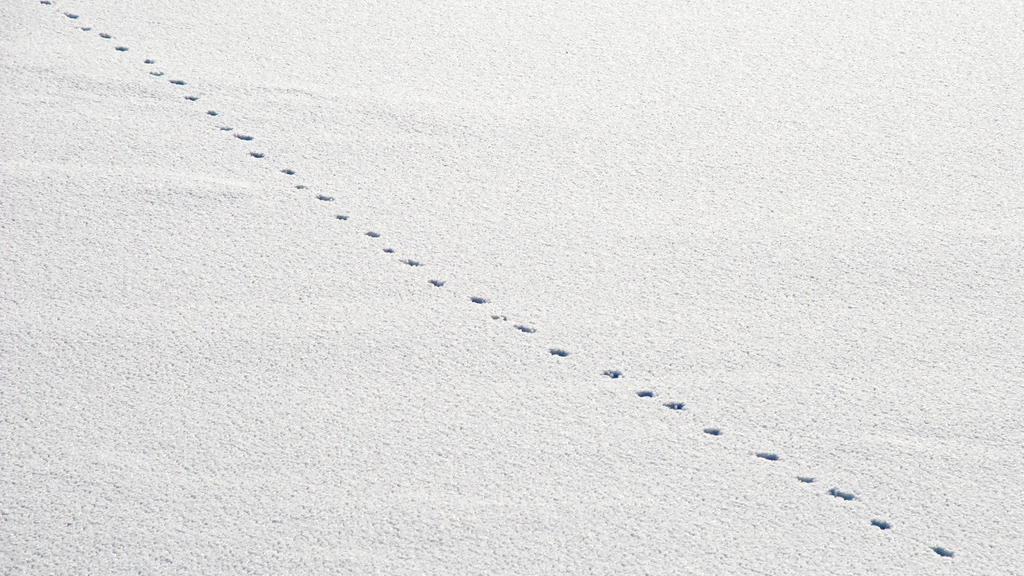
Red fox was here. Photo © Jean-François Chénier / Flickr through a Creative Commons license The red fox’s tracks are distinctive: little round pads that are “single file” – the tracks lined up neatly behind one another. To me, they resemble a dainty dog.
As many naturalists have pointed out, dogs and coyotes are easily distracted, and their tracks wander accordingly. A red fox’s tracks give the impression of a creature that knows exactly where it’s going – and it’s not messing around.
This makes fox tracks fun and easy to follow. Track slowly, and scan ahead of you: you may catch a glimpse of the fox hunting or even resting. They are very active in winter, making them much easier to see.
-
Raccoon
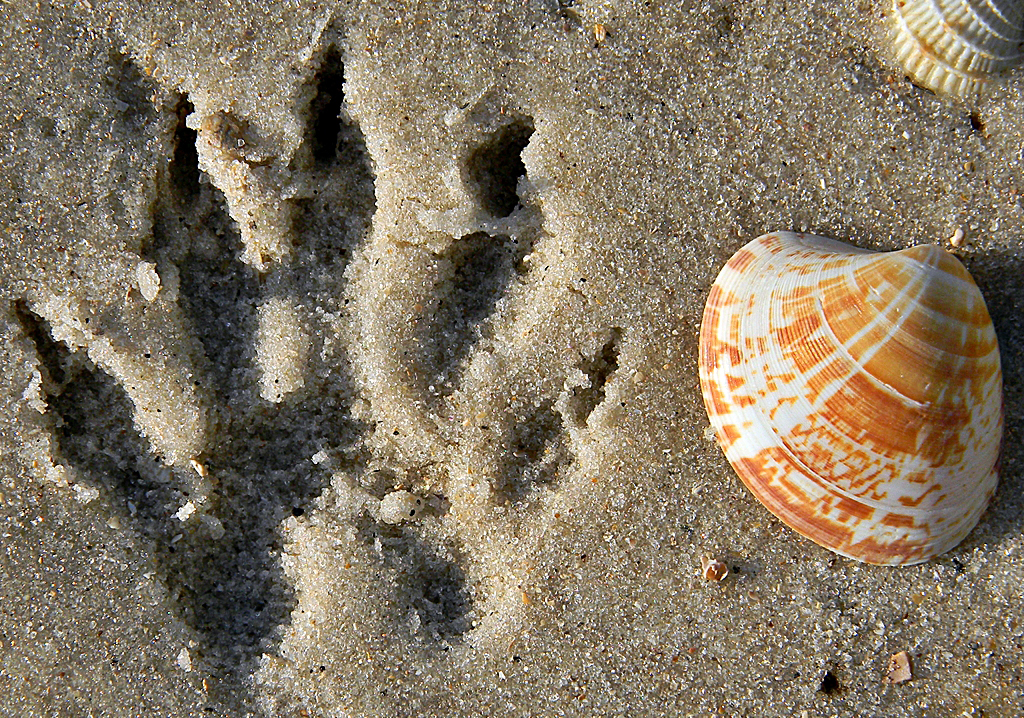
Raccoon track next to a lightning venus clam on the beach at Munyon Island. Photo © Bob Peterson / Flickr through a Creative Commons license Early naturalists in the 20th century lamented raccoons, then a creature of the forest. They feared, as forests cleared, the raccoon would go the way of the passenger pigeon. How wrong they were. Raccoons, it turned out, found farms, suburbs and even dense cities to be much better habitats. They’ve colonized them and prospered.
Their tracks are distinctive: think two- to three-inch “hands” with five fingers. Their gait is such that their front paw and slightly larger back paw fall side by side on the ground. Tracking them reveals just how adaptable they are: cruising along rivers one minute and then dipping into a storm sewer the next. It can be amusing when you see tracks pause by a garbage can, much less so when they’re by your chicken pen.
-
Opossum
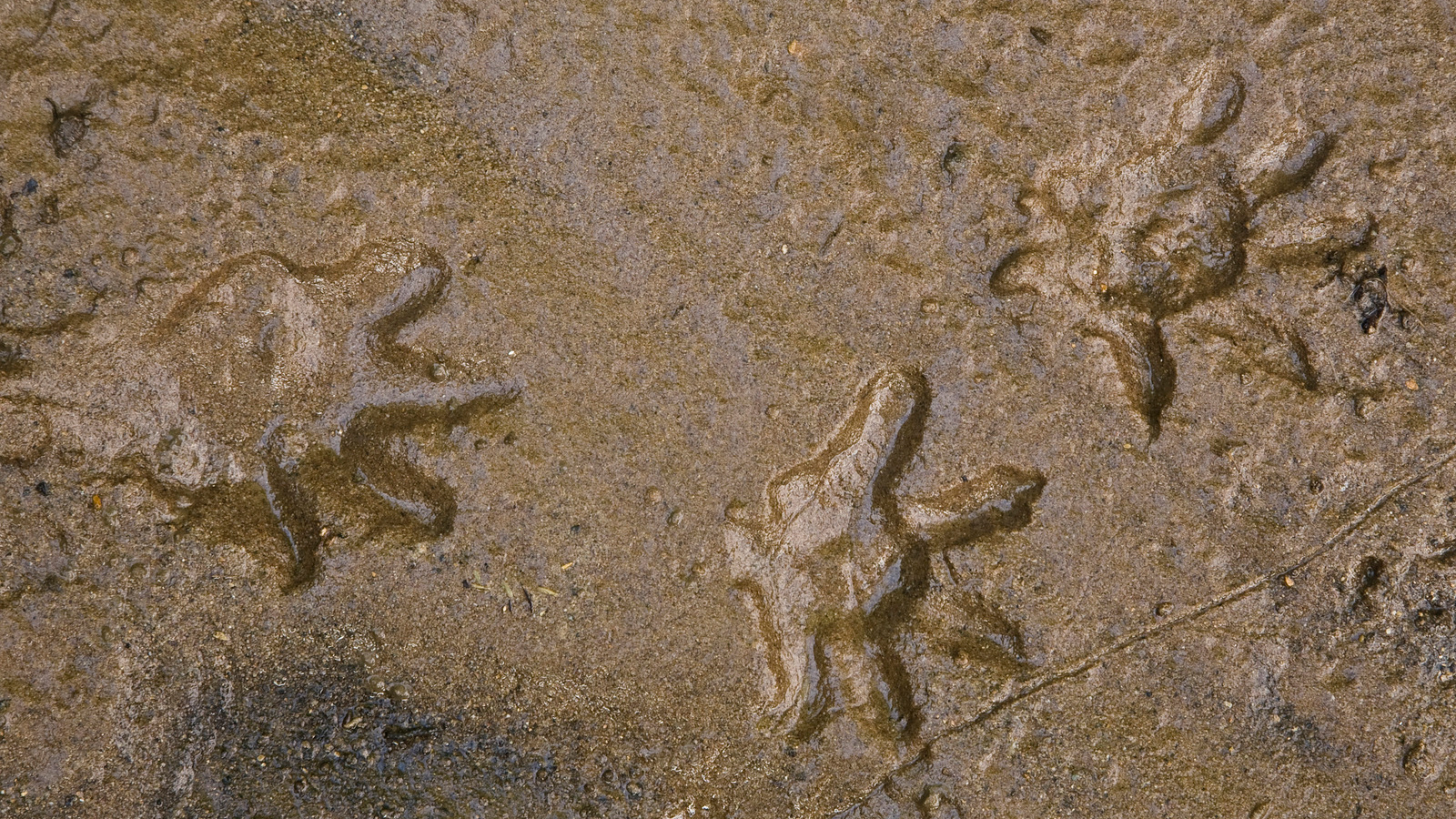
Animal tracks (probably Opossum) in mud at Dolly Sods Wilderness. Photo © Kent Mason Opossum tracks are somewhat similar to those of a raccoon; in some situations they can be difficult to tell apart. But usually you can tell the opossum because its fingers appear splayed, giving the impression of a human hand that is spread out.
Opossums often den in old woodchuck holes and other burrows, and the animals follow a routine. This means there is often a well-used trail where their tracks are easily visible. While I have seen opossum tracks in the snow, cold weather is not optimal for these creatures. They have steadily expanded their range north, but when temperatures dip, their tails often suffer from frostbite.
-
Cottontail Rabbit
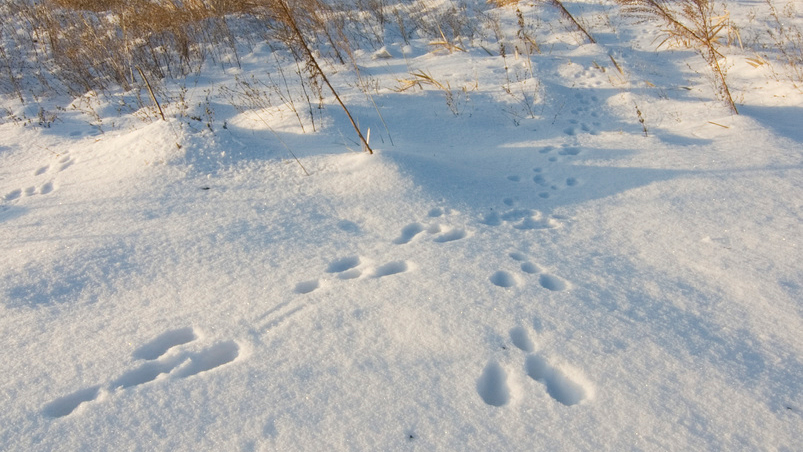
Rabbit tracks in snow with prairie grasses at Deep Well Wildlife Management Area Prairie, a Nebraska Game and Parks Commission site. Photo © The Nature Conservancy (Chris Helzer) One of the most common tracks you’ll encounter on a snowy day. Rabbit tracks often criss-cross each other, which makes following them a challenge. The rabbit’s tracks appear as two pairs: smaller, better-defined pads (the front feet) and larger, almost slash-like pads (back feet). The front feet are very close together, sometimes appearing as one track. The back feet are spread apart. If the rabbit is hopping, the back feet often appear in the snow ahead of the front feet.
Following rabbit tracks, you can often find where one stopped to browse a limb, or duck under a brush pile for cover. Like many other smaller mammals, they also use burrows dug by other animals for shelter.
-
Raptor “Snow Angels” and Other Signs of Predation
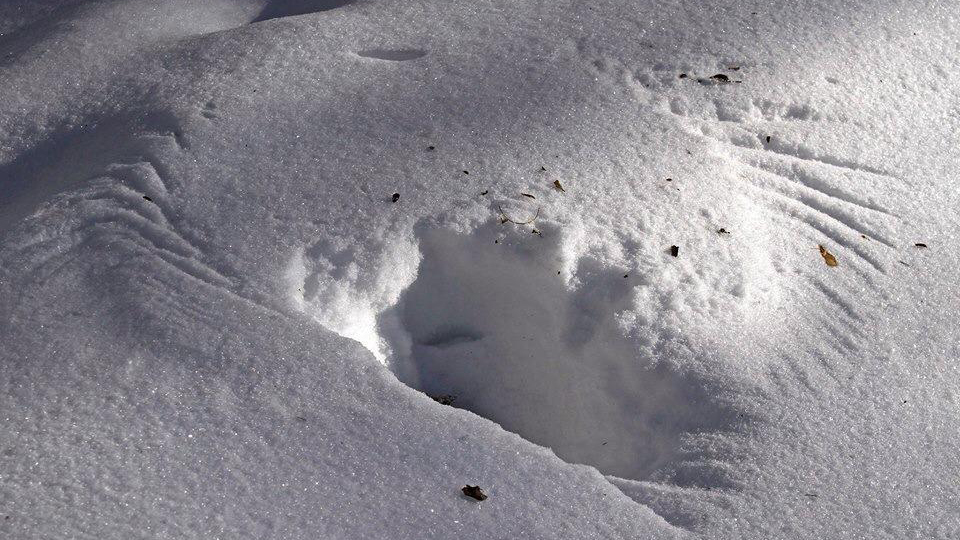
Raptor snow angel. Photo © USFWS/Flickr through a Creative Commons license And sometimes when tracking rabbits, you’ll find where one met a violent end. Lots of predators eat rabbits, and most of them are out hunting on a winter day. When you’re tracking, you may see signs of this struggle between predator and prey.
The most striking example is what some call a raptor “snow angel”: wings of a bird of prey are delicately brushed on a snowy surface. This is a deadly snow angel: it’s what happens when a raptor swoops and picks its prey off the snow.
Other signs of predation will resemble the finale of a slasher flick: churned snow, blood, fur and animal parts will lie strewn about. For a dedicated tracker, frankly, it doesn’t get much better.
-
Small Rodents

Small mammal tracks and burrow in snow. Lancaster County, Nebraska. March 1995. Central Tallgrass Prairie Ecoregion. Photo © Chris Helzer / TNC There could be several small species of rodents in your neighborhood – including deer mice and various voles. They often just leave tiny indents in the snow. But if the conditions are just right—snow that is slightly wet—you can actually make out the full detail of their small feet. Voles prefer not to be running around on snow, because a small, brown mammal on a white backdrop quickly becomes dinner (see above).
Voles do live in burrows just below the surface. When it snows, they burrow between grass and snow. When the snow melts, you can easily see these burrows: they look like grass tubes above the ground. In some areas, these burrows reveal an amazing density of voles, with the “tubes” forming maze-like latticework across the lawn.
-
Beaver
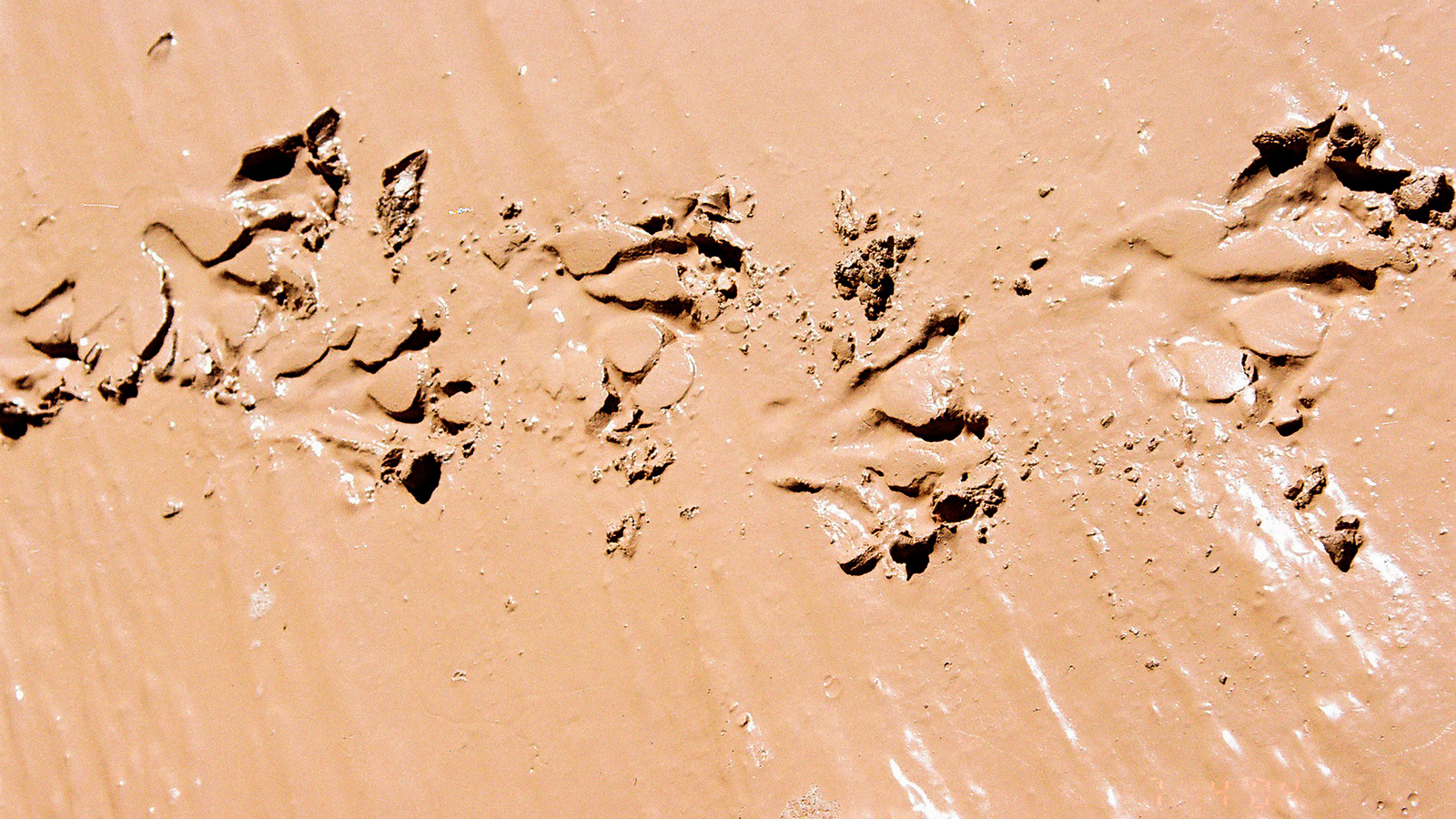
Beaver tracks in mud along the San Pedro River at 3-Links Farm. Photo © The Nature Conservancy (Sue Sirkus) Beavers, a major conservation success story, are appearing in many urban and suburban waterways. They’re not often easy to see, but their signs are hard to miss. Of course, the biggest clue is in the trees: if they’re around, you’ll see tree branches neatly cleaned of all bark and of course large trunks with their toothy chisel marks.
They also leave very interesting tracks. Their unique tail trails behind them in the snow or mud, leaving the impression of a sled. If you find all this sign of beaver activity, it’s worth staking out the area at dusk for a sight of the live animal.
-
Turkey
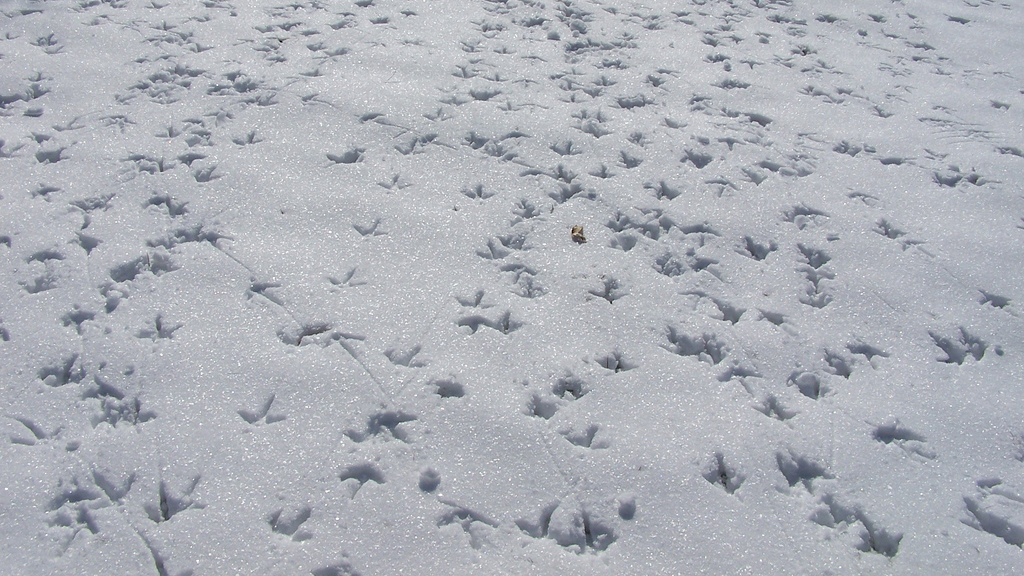
Turkey tracks. Photo © Tim Engleman / Flickr through a Creative Commons license Most birds are difficult to track. Many leave tracks, of course: you’ll see them all around your bird feeder. But they’re difficult to distinguish by species, and they often land, hop around and fly away. Not exactly an exciting tracking experience.
Some birds, though, move around a lot on foot. Various quail species and ring-necked pheasants can be quite fun to track. But best of all is the turkey. Turkey tracks are difficult to miss. Yes, they have the three-pronged foot of a bird, but in the snow or mud the tracks appear huge. In winter, they’re living in large flocks, so the tracks give the impression of a turkey army trekking through the woods.
Follow them and you’ll understand the fascinating lives of these birds. You’ll see that they frequently stop to scratch up seeds and insects (they’ll eat just about anything), and can cover a lot of ground in a day. They’re one of the easiest and most fun species to track for an extended period of time.
-
Grouse Snow Cave
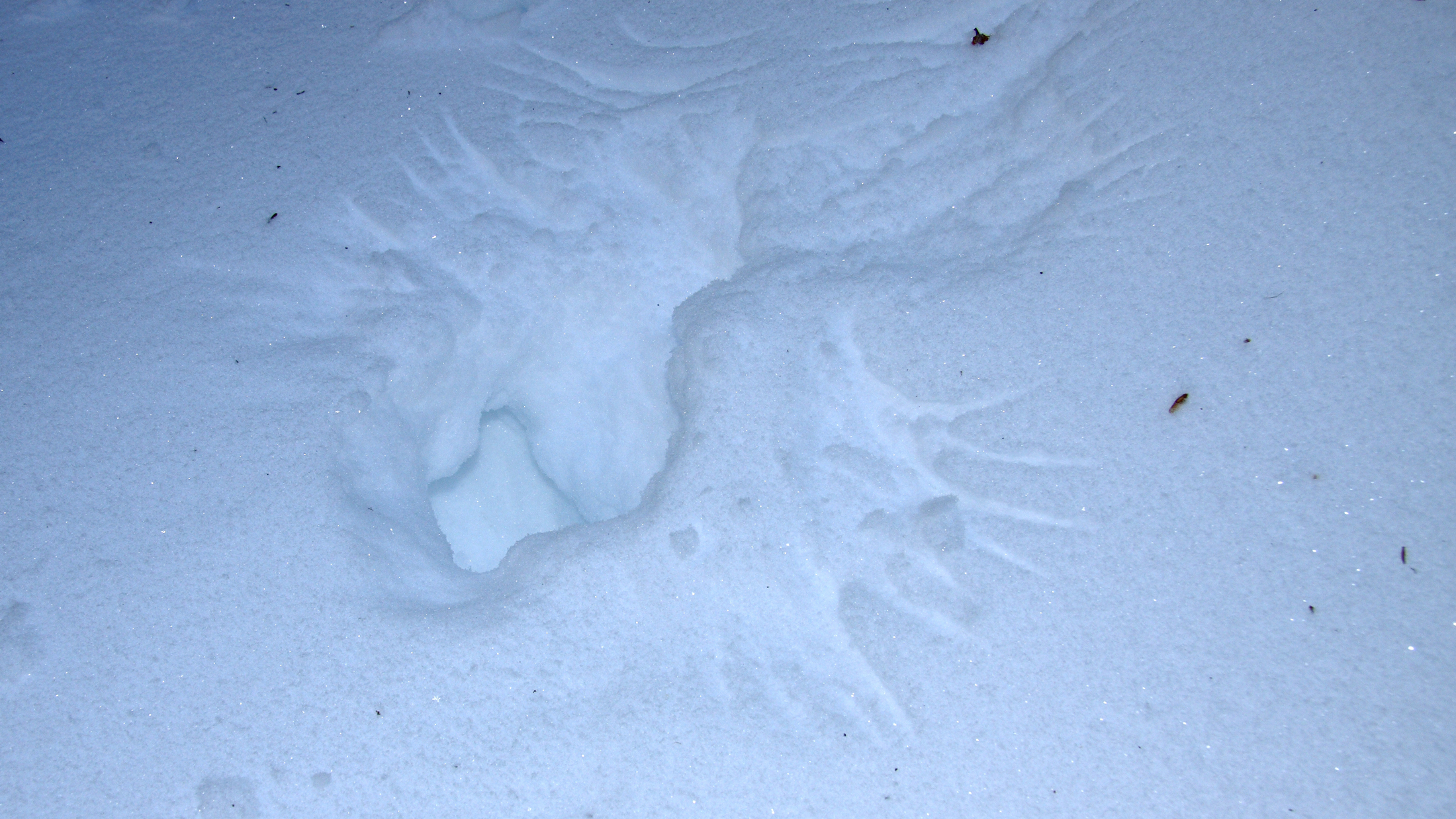
Snow hole and wing marks: signs of a ruffed grouse shelter. Photo © Cephas / Wikimedia Commons One of the most interesting “tracks” is not a print. Ruffed grouse escape the harshness of winter by plunging from the air into deep snow. The snow melts around their body and forms a snug snow cave. When startled, the grouse will burst from the cave, leaving its own “snow angel” behind.
Since grouse don’t dig their snow cave, you can’t really track the bird. As such, finding evidence of one is one of tracking’s most difficult feats.
-
Wolf and Mountain Lion
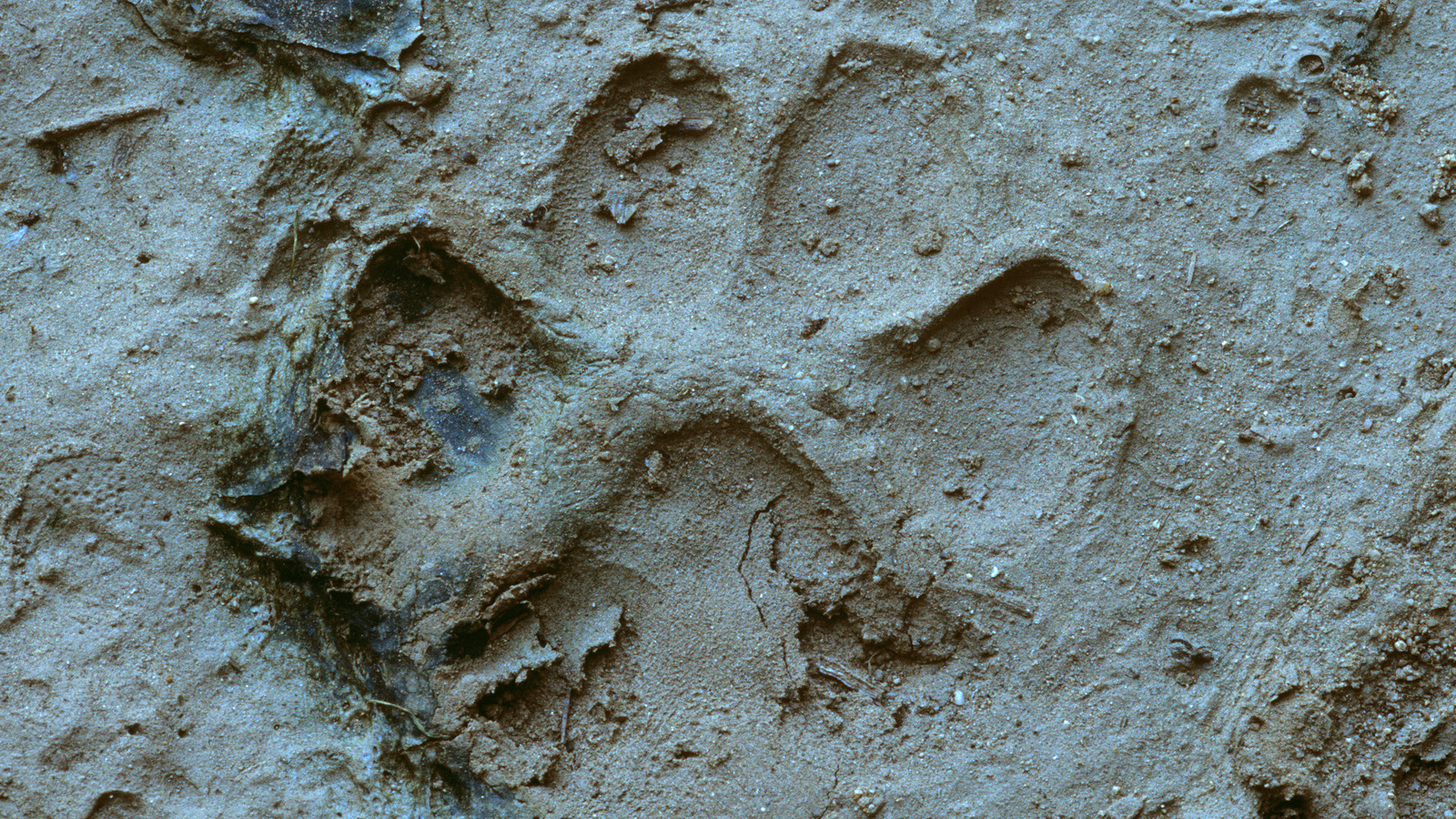
A mountain lion track is visible in sandy soil in a wildlife tunnel beneath Highway 118 at Santa Susana Pass in Simi Valley, CA. Photo © Bill Evarts I know that wolves and mountain lions don’t roam in many neighborhoods. But in many parts of the Western United States, they do follow mule deer migrations in winter, which often means these large predators are closer to towns and cities.
They can get quite close to my home in Boise, Idaho. Many people report seeing their tracks, but the reality is it’s often a case of mistaken identity. Coyotes and dogs leave similar tracks, and many become “wolf” by an inexperienced or over-eager tracker.
I’ve encountered both animal tracks in wilderness areas. The overwhelming first impression is this: They’re big. Really, really big. The first time you see a genuine wolf track, you will see it is nothing like a dog. Ditto for mountain lion.
A mountain lion, like other cats, retracts its claws, so it’s tracks appear like a pie pan. They are at least three inches long and wide. You can see the claws of a gray wolf, and its tracks indeed resemble a really large dog. The wolf’s tracks are 4.5 inches or more in length and width.
When I’ve found the tracks of these animals, the size and setting always make my hair stand up. I know I’m far more likely to be struck by lightning than attacked by a wolf, but the size and evident power of these animals demand you pay attention: it’s the sign of wild country.
But encountering even a raccoon or beaver track on your evening jog can elicit a sense of wonder: the neighborhood just got a bit more interesting, a bit wilder.
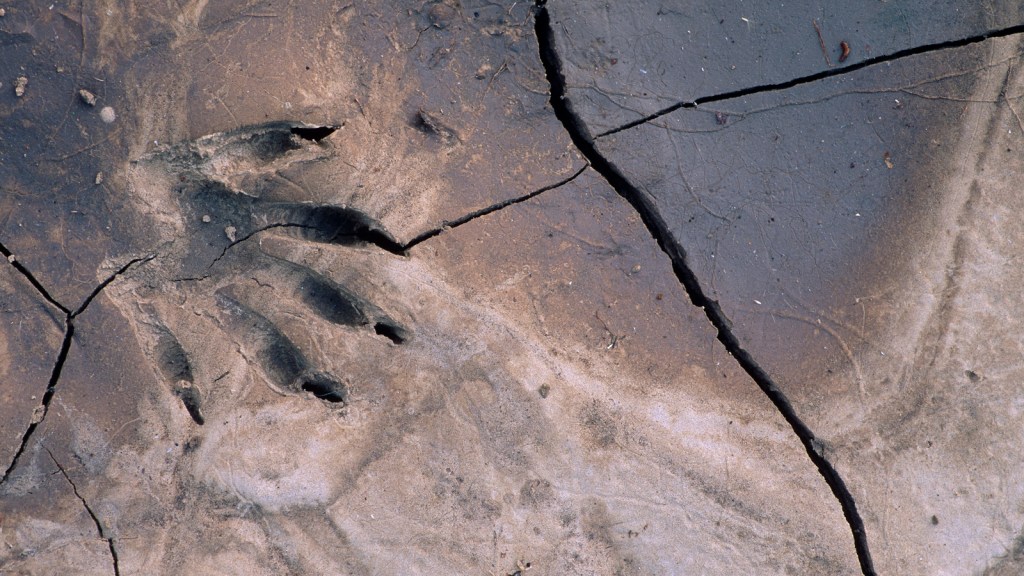



thanks..it’s nice to learn something entirely new, in snowy Vermont.
Thanks for creating this great resource! I came here to find out what kind of tracks my daughter and I had seen on the way to her bus stop this morning. I couldn’t remember ever seeing tracks that went in almost a perfectly straight, single-file line. Turns out they were probably from a fox (they look almost exactly like your example of fox prints here), which is very exciting to learn since we live in an urban neighborhood within a mile of downtown Minneapolis. I had no idea there could be foxes here, but now we will be keeping an eye out and hoping to see one trotting through the neighborhood!
I love to track bobcats, which are my favorite animal. I came to this sight to verify red fox tracks in the snow. We have 12 acres of meadows in front of the house. There are abundant voles there. The rabbit population seems low however that is due to the multitude of predators; barred owls, red tail hawks, northern harriers, fox, bobcat and an occasional coyote.
Hi,
I live near Buena Vista, Colorado and I found some interesting prints on my steps today following a snow storm. I think it’s a fox but there are only 4 “toes” and no pad in a straight line. I live in a rural area so no chance of anyone playing a joke. I took a photo, and I would love your insight if you would let me send it.
They are small, a couple of inches, but I would like to know what campers I have. Can you help me?
Turkeys. Their tracks are so comical to me. Always good for a broad smile.
Possum’s are fun too, like a little party happened in the snow.
Have you seen tracks (in the snow) that look like someone placed a ruler in the snow? They are 3″- about 10 “.